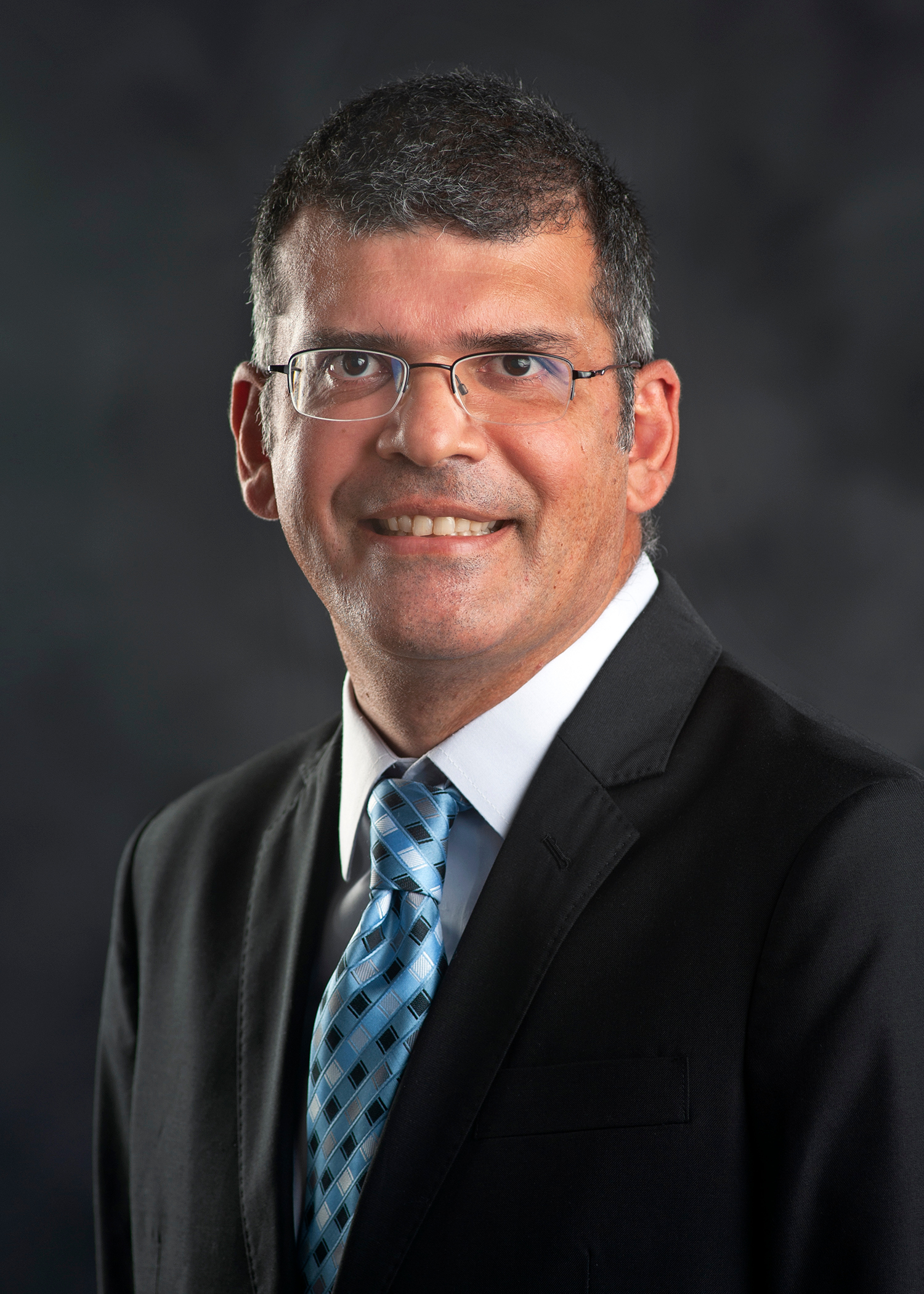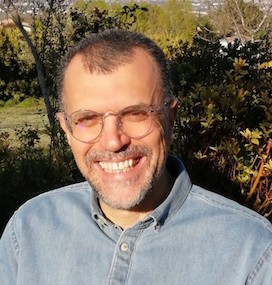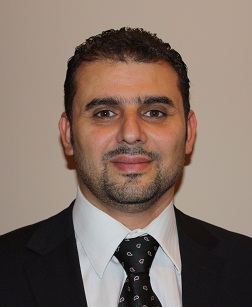 |
Prof. Samee U Khan, Mississippi State University, USA
Abstract: Some Revised Perspectives on Internet of Things
The year 2020 marks the first time when we have more Internet of Things (IoT) device connections than non-IoT devices. As such, several interesting questions are being debated: How should the IoT architecture look like? Where does IoT fit in worlds of fog, edge, cloud computing? How must one address IoT security? What applications will benefit from IoT? These are some example questions, not an exhaustive list, and not presented as a set of priority questions – but as highlights to exemplify a 360-degree approach is needed for the IoT paradigm. In this talk, we will investigate the current landscape of IoT, the security threats and measures, the big players in the IoT world, and address a few of the above mentioned questions. |
|
Biography:
Samee U. Khan received a PhD in 2007 from the University of Texas. Currently, he is the Department Head and the James W. Bagley Chair in Electrical & Computer Engineering at the Mississippi State University (MSU). Before arriving at MSU, he was Cluster Lead (2016-2020) for Computer Systems Research at National Science Foundation and the Walter B. Booth Professor at North Dakota State University. His research interests include optimization, robustness, and security of computer systems. His work has appeared in over 400 publications. He is associate editor-in-chief of the IEEE IT Pro, and an associate editor of IEEE Transactions on Cloud Computing, Journal of Parallel and Distributed Computing, and ACM Computing Surveys.
|
|
 |
Prof. Bhavani Thuraisingham, The University of Texas at Dallas, USA
Abstract: The Role of Artificial Intelligence and Cyber Security for Social Networks and Internet of Transportation
Social networks such as Facebook and Twitter are being used for the good of humanity. For example, these systems can inform the users of the spread of diseases, provide for the support for emergency preparedness as well as enable the sharing of information so that the users are better informed about various topics such as politics and sports. Various analytics tools are being applied on these systems to extract information not only about the users but also about the contents of their posts. While the nuggets that are extracted could help humanity, they can also compromise individual privacy. In addition, social media systems have also been the vehicle for spreading false rumors that could be damaging to the individuals and cause great harm. In addition, the social media systems as well as the analysis techniques could be compromised due to cyber-attacks and as a result the information posted could be compromised.
Another type of network that AI and Cyber Security are being applied is the Internet of Transportation. With the advent of the web, it is now possible to collect, store, manage, and analyze vast amounts of sensor data emanating from numerous devices and sensors including from various transportation systems. Such systems collectively are known as the Internet of Transportation Systems. However, security and privacy for the Internet of Transportation and the infrastructures that support it is a challenge. Due to the large volumes of heterogeneous data being collected from numerous devices, the traditional cyber security techniques such as encryption are not efficient to secure the Internet of Transportation. Some Physics-based solutions being developed are showing promise.
This keynote presentation will be divided into two parts. The first part explores the use of the applications of artificial intelligence (AI) techniques for social media as well as examines how social media systems could be protected from cyber-attacks. In addition, the privacy violations that could occur are also addressed. The presentation will also explore some of the emerging challenges we are faced with due to the fake news being posted and the novel cyber-attacks on social media systems. The second part of the presentation examines the developments on securing the Internet of Transportation and its supporting infrastructures as well as the privacy implications. Finally, it describes ways in which AI and Security could be incorporated into the Internet of Transportation and Infrastructures.
|
Biography:
Dr. Bhavani Thuraisingham is the Founders Chair Professor of Computer Science and the Executive Director of the Cyber Security Research and Education Institute at The University of Texas at Dallas (UTD) and is also a visiting Senior Research Fellow at Kings College, University of London. Her 40-year career includes Industry (Honeywell), Federal Research Laboratory (MITRE), US Government (NSF) and US Academia. Her research interests are on integrating cyber security and artificial intelligence/data science for the past 35 years (formerly known as computer security and data management) including as they related to public policy, terrorism and healthcare. The depth and breadth of her research are reflected in her being elected a Fellow of multiple prestigious STEM organizations including a Fellow of the ACM (Computing), IEEE (Engineering), AAAS (Science), NAI (Technology Innovation), and the British-based IMA (Mathematics).
She has received several awards for her research including the IEEE CS 1997 Technical Achievement Award, ACM SIGSAC 2010 Outstanding Contributions Award, the IEEE ISI 2010 Research Leadership Award, the IBM 2013 Faculty Award, the IEEE CS Services Computing 2017 Research Innovation Award, the ACM CODASPY 2017 Lasting Research Award, the IEEE Comsoc Communications and Information Security 2019 Technical Recognition Award,, the 2013 IBM Faculty Award and the ACM SACMAT 10 Year Test of Time Awards for 2018 and 2019 (for papers published in 2008 and 2009). She has graduated numerous female PhD students as well as those from the African American, Hispanic American, and LGBTQ communities at UTD and co-chaired the Women in Cyber Security Conference (WiCyS) in 2016, delivered the featured address at the 2018 Women in Data Science (WiDS) at Stanford University, chaired a plenary panel on Diversity, Equity and Inclusion at
IEEE ISI (Intelligence and Security Informatics) in 2020, and also received the Dallas Business Journal 2017 Women in Technology Award. Her work has resulted in 130+ journal articles (e.g., several IEEE and ACM Transactions), 300+ conference papers (e.g., ACM KDD, IEEE ICDM, ACM OOPSLA, IEEE ICDE, VLDB), 170+ keynote and featured addresses (e.g., EDBT, ACM SACMAT, IEEE ICKG), seven US patents, fifteen books as well as technology transfer of the research to commercial products and operational systems. She received her PhD from the University of Wales, Swansea, UK in Theory of Computation, and the prestigious earned higher doctorate (D. Eng) from the University of Bristol (England), UK for her published research in secure data management.
| |
|
 |
Prof. Khalil Drira, University of Toulouse, France
Abstract: Challenges of IOT Service Platforms
Recent advances in information and communication technologies include virtualization both at the processing and the communication levels as well as interoperability at the different interaction levels. The progress in networking encompasses Machine-to-Machine (M2M) communications for Internet of Things and Big Data traffic that constitute active research and standardization activities in Europe by ETSI, and around the world by OneM2M. The design and deployment of interoperable IoT platforms based on open systems and interfaces are identified as enablers for the digital market. The strategic application domains include e-heath, connected and automated vehicles, advanced dynamic manufacturing, energy management and smart homes, buildings and cities. IoT Systems provide advantages in all these various domains. This fast-growing ecosystem is leading IoT towards a promising future. However, IoT systems expansion opportunities are not straightforward. A set of challenges should be overcome to enable IoT mass-scale deployment across various domains including interoperability, autonomy, and scalability issues. This talk aims at giving an overview of these challenges. Recent international standardization and R&D initiatives will be investigated. Future directions will be highlighted. |
|
Biography:
Khalil DRIRA received the Engineering and M.S. (DEA) degrees in Computer Science from ENSEEIHT (INP Toulouse), in June and September 1988 respectively. He obtained the Ph.D. and HDR degrees in Computer Science from UPS , University Paul Sabatier Toulouse, in October 1992, and January 2005 respectively. He was from oct 1992 to sept 2010, Chargé de Recherche, and he is since oct 2010 Directeur de Recherche, a full-time research position at the French National Center for Scientific Research (CNRS). Khalil DRIRA’s research interests include formal design, implementation, testing and provisioning of distributed communicating systems and cooperative networked services. His research activity addressed and addresses different topics in this field focusing on model-based analysis and design of correctness properties including testability, robustness, adaptability and reconfiguration. He is or has been involved in several national and international projects in the field of distributed and concurrent communicating systems. He is author of more than 150 regular and invited papers in international conferences and journals. He is or has been initiator of different national and international projects and collaborations in the field of networked services and distributed and communicating systems. Khalil DRIRA is or has been member of the programme committees of international and national conferences. He is member of the editorial board of different international journals in the field of software architecture and communicating and distributed systems. Khalil DRIRA has been editor of a number of proceedings, books and journal issues in these fields.
|
|
 |
Prof. Juan Manuel Corchado, University of Salamanca, Spain
Abstract: AIoT for Smart territories
Artificial Intelligence revived in the last decade. The need for progress, the growing processing capacity and the low cost of the Cloud have facilitated the development of new, powerful algorithms. The efficiency of these algorithms in Big Data processing, Deep Learning and Convolutional Networks is transforming the way we work and is opening new horizons. Thanks to them, we can now analyse data and obtain unimaginable solutions to today’s problems. Nevertheless, our success is not entirely based on algorithms, it also comes from our ability to follow our “gut” when choosing the best combination of algorithms for an intelligent artefact. It's about approaching engineering with a lot of knowledge and tact. This involves the use of both connectionist and symbolic systems, and of having a full understanding of the algorithms used. Moreover, to address today’s problems we must work with both historical and real-time data. We must fully comprehend the problem, its time evolution, as well as the relevance and implications of each piece of data, etc. It is also important to consider development time, costs and the ability to create systems that will interact with their environment, will connect with the objects that surround them and will manage the data they obtain in a reliable manner.
In this keynote, the evolution of intelligent computer systems will be examined. The need for human capital will be emphasised, as well as the need to follow one’s “gut instinct” in problem-solving. We will look at the benefits of combining information and knowledge to solve complex problems and will examine how knowledge engineering facilitates the integration of different algorithms. Furthermore, we will analyse the importance of complementary technologies such as IoT and Blockchain in the development of intelligent systems. It will be shown how tools like "Deep Intelligence" make it possible to create computer systems efficiently and effectively. "Smart" infrastructures need to incorporate all added-value resources so they can offer useful services to the society, while reducing costs, ensuring reliability and improving the quality of life of the citizens. The combination of AI with IoT and with blockchain offers a world of possibilities and opportunities.
The use of edge platforms or fog computing helps increase efficiency, reduce network latency, improve security and bring intelligence to the edge of the network; close to the sensors, users and to the medium used.
This keynote will present success stories regarding specially smart cities. All these fields require the development of interactive, reliable and secure systems which we are capable of building thanks to current advances. Deepint.net, a tool developed by DCSc and BISITE will be presented. Several use cases of intelligent systems will be presented and it will be analysed how the different processes have been optimized by means of tools that facilitate decision-making.
|
|
Biography:
Juan Manuel Corchado (born May 15, 1971 in Salamanca, Spain). He is Full Professor with Chair at the University of Salamanca. He was Vice President for Research and Technology Transfer from December 2013 to December 2017 and the Director of the Science Park of the University of Salamanca, Director of the Doctoral School of the University until December 2017 and also, he has been elected twice as the Dean of the Faculty of Science at the University of Salamanca. In addition to a PhD in Computer Sciences from the University of Salamanca, he holds a PhD in Artificial Intelligence from the University of the West of Scotland. Juan Manuel Corchado is Visiting Professor at Osaka Institute of Technology since January 2015 and Visiting Professor at the Universiti Malaysia Kelantan.
Corchado is the Director of the European IoT Digital Innovation Hub and of the BISITE (Bioinformatics, Intelligent Systems and Educational Technology) Research Group, which he created in the year 2000, President of the AIR Institute, Academic Director of the Institute of Digital Art and Animation of the University of Salamanca and has been President of the IEEE Systems, Man and Cybernetics Spanish Chapter. He also oversees the Master´s programs in Digital Animation, Security, Blockchain, IoT, Mobile Technology, Information Systems Management and Agile Project Management at the University of Salamanca.
|
|
 |
Prof. Abdulmotaleb El Saddik, University of Ottawa, Canada
Abstract: Multimedia Convergence for Citizens’ Well-Being
A digital twin is a digital replication of a living or non-living physical entity. By bridging the physical and the virtual worlds, data is transmitted seamlessly allowing the virtual entity to exist simultaneously with the physical entity. A digital twin facilitates the means to monitor, understand, and optimize the functions of the physical entity and provides continuous feedback to improve quality of life and wellbeing of citizens in smart cities. In this research program, we explore the design and development of frameworks, methodologies and methods regarding the convergence of multimedia technologies (AR/VR, AI, IoT, Big Data, Cybersecurity and 5G) towards the digital twin for health care. We address diverse challenges and the open research questions. |
|
Biography:
Abdulmotaleb El Saddik (FRSC, FIEEE, FCAE, FEIC), is Distinguished University Professor and University Research Chair in the School of Electrical Engineering and Computer Science at the University of Ottawa. He is an internationally-recognized scholar who has made strong contributions to the knowledge and understanding of multimedia computing, communications and applications. Prof. El Saddik is the director of the Medical Devices Innovation Institute (MDII) and the Multimedia Computing Research Laboratory (MCRLab). He is Senior Associate Editor in several flagship journals and has served a General Chair and/or Technical Program Chair of more than 50 international conferences symposia and workshops on collaborative hapto-audio-visual environments, multimedia communications and instrumentation and measurement. He is a leading researcher in smart health, Internet of things, haptics, social media, and collaborative and ambient interactive media and communications (smart cities). He has authored and co-authored three- patents, five books and more than 550 publications. He has received research grants and contracts totaling more than $18 million and has supervised more than 120 researchers.Prof. El Saddik is a Fellow of the Royal Society of Canada, a Fellow of the IEEE , elected Fellow of the Canadian Academy of Engineering and Fellow of the Engineering Institute of Canada.
|
|
 |
Dr. Thomas Watteyne, INRIA, France
Abstract: Crystal-Free Architectures for Smart Dust and the Industrial IoT
A crystal-free architecture of a low-power wireless node allows for a small and cheap design. The Single-Chip micro Mote (SCuM) is the first crystal-free mote-on-chip to be compatible with standards such as Bluetooth Low Energy and IEEE802.15.4, and develops as a collaboration between Kris Pister’s team at UC Berkeley and Thomas Watteyne’s team at Inria. This keynote will go through our 2019-2020 research journey around the SCuM chip.
We start by detailing why a “crystal-free” architecture is such as radical move away from traditional low-power wireless radio design. We discuss the challenges of calibration and compensation in these designs, and show how we get a SCuM chip to communicate with off-the-shelf motes and participate in a standards-based IoT network.
We then present an unexpected use case that crystal-free motes enable: tracking Asian hornets as they fly from a beehive back to their nest. We illustrate this presentation with numerous videos and hands-on experience.
We finish this talk by discussing why crystal-free micro-robots are the next frontier of IoT research, addressing all open IoT networking research questions at once, which a tremendous potential for pioneering applications such as micro-wearables and swarm robotics.
This keynote is tailored to the advanced researcher or engineer in embedded system, IoT and low-power wireless. It draws on recent activities within Inria’s EVA team (team.inria.fr/eva/), UC Berkeley’s Pister lab (bamlab.berkeley.edu) and their collaborative project around crystal-free architectures (www.crystalfree.org).
|
|
Biography:
Thomas Watteyne (http://www.thomaswatteyne.com/, @thomaswatteyne) is an insatiable enthusiast of low-power wireless mesh technologies. He holds an Research Director position at Inria in Paris, in the EVA research team, where he leads a team that designs, models and builds networking solutions based on a variety of Internet-of-Things (IoT) standards. He is Senior Networking Design Engineer at Analog Devices, in the Dust Networks product group, the undisputed leader in supplying low power wireless mesh networks for demanding industrial process automation applications. Since 2013, he co-chairs the IETF 6TiSCH working group, which standardizes how to use IEEE802.15.4e TSCH in IPv6-enabled mesh networks, and is member of the IETF Internet-of-Things Directorate. Prior to that, Thomas was a postdoctoral research lead in Prof. Kristofer Pister’s team at the University of California, Berkeley. He founded and co-leads Berkeley’s OpenWSN project, an open-source initiative to promote the use of fully standards-based protocol stacks for the IoT. Between 2005 and 2008, he was a research engineer at France Telecom, Orange Labs. He holds a PhD in Computer Science (2008), an MSc in Networking (2005) and an MEng in Telecommunications (2005) from INSA Lyon, France. He is Senior member of IEEE. He is fluent in 4 languages.
|
|
|
|